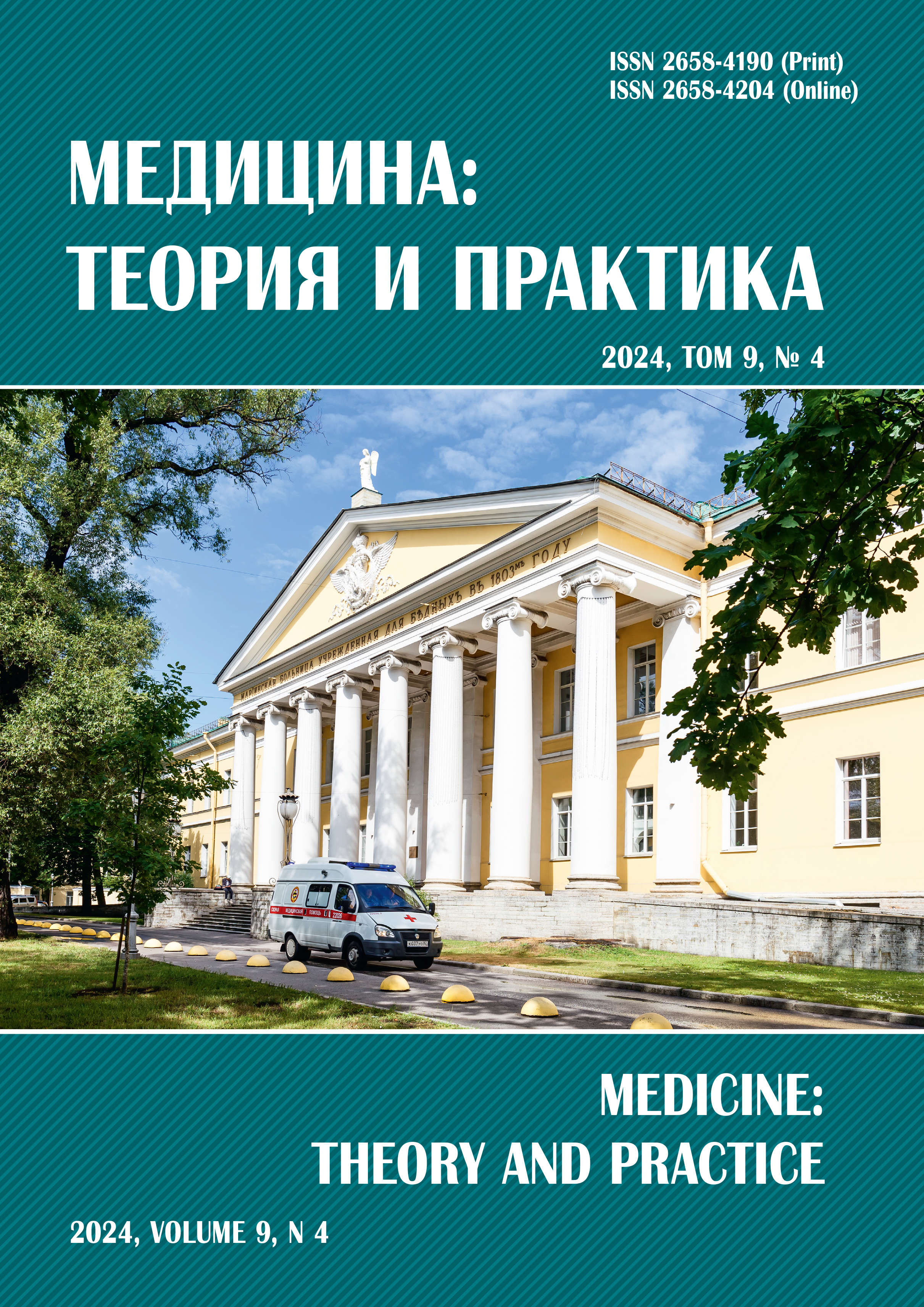POSSIBILITY OF USE COGNITIVE EVOKED POTENTIALS FOR SELECTION SURGICAL TREATMENT FOR ISCHEMIC STROKE
Abstract
Introduction. The neurophysiological methods of studying evoked brain activity have acquired the greatest relevance. They are able to identify functional disorders that are of great prognostic value. The aim of the study is to study the dynamics of indices of cognitive evoked potentials (P300) in patients with ischemic atherothrombotic stroke of varying severity. Materials and methods. We exa mined 316 ischemic stroke patients of moderate severity, who underwent carotid endarterectomy at different times the development of the stroke, analyzed the dynamics of the amplitude-latency indices of cognitive evoked potentials in the postoperative period. We compared the dynamics of latency and amplitude of cognitive evoked potentials in the postoperative period. Results. On the 7th day after surgery, patients in both groups showed an increase in latency and a decrease in P300 amplitude on the side of the affected and clinically intact hemisphere. In patients of group I, on the 21st day of the postoperative period, there was a decrease in latency and an increase in amplitude of P300 on the side of the clinically intact hemisphere (p <0.05). In patients of group II, on the 14th day of the postoperative period, there was a decrease in latency and an increase in amplitude of P300 on the side of the affected hemisphere (p <0.05). Conclusion. Operationin after two weeks after the development of a stroke leads in patients with neurological deficit to NIHS scale 7–14 to the absence of significant latency, amplitudes in the dynamics of the postoperative period, which determines a longer recovery of neurological deficit in the postoperative period.
References
Баркаускас Е., Мескаскене А., Лаурикенас К. Риск, связанный с каротидной эндартерэктомией у пациентов с инфарктом головного мозга. Ангиология и сосудистая хирургия. 2005;1(1):103–111.
Окнина Л.Б., Кузнецова О.А., Белостоцкий А.П. и др. Амплитудно-временные характеристики длиннолатентных компонентов акустического вызванного потенциала (N1, N2, и Р300) у здоровых испытуемых. Физиология человека. 2011;37(1):56–64.
Окнина Л.Б., Кузнецова О.А., Ениколопова Е.В. Временные особенности включения дипольных источников Р300 акустического вызванного потенциала при решении задач разной степени сложности. Физиология человека. 2009;35(5):5–12.
Окнина Л.Б., Шарова Е.В., Зайцев О.С. и др. Компонент Р300 акустического вызванного потенциала у больных с очаговым поражением головного мозга. Журн. неврол. и психиатр. 2003;7:31–39.
Abu Rahma A.F., Robinson P., Holt S.M. et al. Perioperative and late stroke rates of carotid endarterectomy contralateral to carotid artery occlusion: results from a randomized trial. Stroke. 2000;31(2):1566–1571.
Ahmed N., Steiner T., Caso V., Wahlgren N. Recommendations from the ESO-Karolinska Stroke Update Conference, Stockholm 13–15 November 2016. European Stroke Journal. 2017;2(2):95–102. DOI: 10.1177/2396987317699144.
Bruls S., Van Damme H., Defraigne J.O. Timing of carotid endarterectomy: a comprehensive review. Acta Chirurgie Belgia. 2012;112(1):3–7.
Halgren E., Marincovic K., Chauvel P. Generators of the late cognitive potentials in auditory and visual oddball tasks. Electroenceph. Clin. Neurophysiol. 1998;106:156–164.
Malcharek M.J., Herbst V., Bartz G.J., Manceur A.M., Gille J., Hennig G., Sablotzki A., Schneider G. Multimodal evoked potential monitoring in asleep patients versus neurological evaluation in awake patients during carotid endarterectomy — a single-centre retrospective trial of 651 patients. Minerva Anestesiol. 2015;6:4–10.



